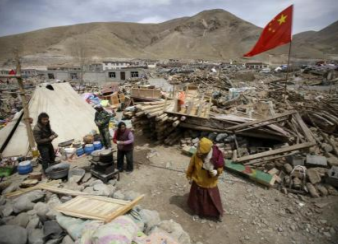
The first few months of 2010 have seemed especially full of misery due to massive earthquakes. In fact, scientists say that neither the number nor the intensity of the earthquakes this year are unusual. The major difference is where the earthquakes occur and how vulnerable communities in those locations are to their effects.
It is now estimated that over 222,000 died and 300,572 were injured when the earthquake struck Haiti on January 12 with a magnitude of 7 on the Richter Scale.
On February 27, another earthquake struck Chile with a magnitude of 8.8, which means that it was 500 times more intense than the event in Haiti. However, the number of deaths – at 486 – was less than 1% of the figure in Haiti.
A similar disparity can be seen between two even more recent earthquakes. On April 4 an earthquake of a magnitude of 7.2 struck Mexico near the border with California, killing a total of two persons. On April 14, a weaker (7.1) earthquake struck Qinghai Province in central China and killed over 1,700.
One major reason for the comparatively greater impact of the Haiti and China earthquakes was the proximity of their epicenters to population centres. However, many experts have also noted a second critical factor – the lack of adequately enforced seismic building codes.
According to reports, Haiti lacked a seismic building code at the time the earthquake struck. In Qinghai, while building codes existed, it has been alleged that they were poorly enforced. In contrast, the United States, Mexico and Chile all have strong building codes, though there have been some charges of enforcement problems leading to building destruction in the Chilean city of Concepción.
It is now unusual for countries to have no building codes at all – but there are still a significant number that have only voluntary codes, or codes that apply only to certain areas or certain kinds of buildings. Even more common are failures of enforcement.
While it is clear that some level of technical expertise is required to understand the science underpinning a good seismic code – no special training is needed to realize that there is a problem when there are no standards on the books or there is no implementation of existing standards. Communities can and should begin to raise these issues with their own authorities. The Red Cross/Red Crescent and other humanitarian partners can help them to do so.